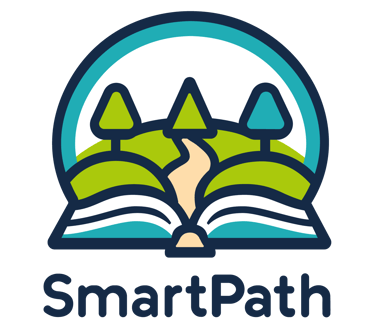What Public Schools Are Learning from Homeschooling (And Why it Matters)


For decades, homeschooling has been viewed as an alternative to traditional education, often met with skepticism. But as more public schools adopt homeschool-inspired practices, the perception is shifting. Self-directed learning, flexible schedules, and project-based education – once hallmarks of homeschooling – are now becoming part of mainstream classrooms.
This shift isn’t just a passing trend. It confirms what homeschooling families have known all along: personalized, interest-driven learning works.
In this article, we’ll dive into how homeschooling has influenced public education and what it means for the future of learning.
Public Schools Are Catching Up to What Homeschoolers Have Always Known
Homeschooling used to be the outlier, the unconventional choice for parents who wanted more flexibility, personalization, or control over their child’s education. Today, it’s shaping the future of learning and is a form of education that’s growing rapidly, continuing even post-COVID.
Although data varies, it’s estimated that 6 to 7% of children in the U.S. are homeschooled. Surveys show that an additional 11% are enrolled in alternative education, such as charter or magnet schools.
Public schools increasingly borrow from homeschooling and flexible education models, incorporating self-directed learning, flexible schedules, and project-based education into their systems. This shift reflects a growing recognition: what homeschoolers have been doing for years works.
Now, faced with declining student engagement and growing recognition that traditional models don’t work for everyone, public schools are beginning to incorporate homeschool-inspired strategies, though with limitations. Let’s take a look at how these approaches compare.
1. Self-Directed Learning vs. Standardized Instruction
What Homeschoolers Do:
Learning is student-driven, allowing children to explore topics based on interest and ability rather than rigid grade-level expectations.
Parents act as facilitators, guiding their child’s education while allowing room for curiosity and independent study.
Subjects can be mastered at an individual pace, with advanced learners moving ahead and those who need more time receiving the support they need.
What Public Schools Are Trying:
Some schools are experimenting with competency-based education, allowing students to progress when they’ve mastered a subject rather than being locked into a one-size-fits-all system.
Schools are introducing more choice-based electives and allowing for some self-paced learning within classrooms.
However, large class sizes and state testing mandates still limit how much personalization is possible.
While public schools are making strides toward personalized learning, homeschoolers have long benefited from the ability to adjust education to fit the child rather than making the child fit the system.
2. Project-Based Learning vs. Rote Memorization
What Homeschoolers Do:
Education is often hands-on, with students learning through real-world experiences, field trips, and creative projects.
Instead of relying on worksheets and textbooks alone, homeschoolers integrate entrepreneurial projects, science experiments, and collaborative activities to reinforce learning.
Homeschool electives are designed around student interests – whether that’s robotics, creative writing, or homesteading – making education more meaningful and applicable.
What Public Schools Are Trying:
Some districts are shifting away from rote memorization and lecture-based learning and toward project-based learning (PBL) models, in which students engage in hands-on, inquiry-based activities.
STEM initiatives and entrepreneurship programs are being introduced in some schools, but these programs are often optional rather than the foundation of education.
Standardized testing still drives much of the curriculum, meaning project-based learning remains limited in scope.
While homeschooling fully embraces experiential learning as a core method, public schools are still in the early stages of integrating these practices, often in isolated programs rather than across all subjects.
3. Flexible Scheduling vs. Fixed School Days
What Homeschoolers Do:
Families design custom schedules based on what works best for their children. Some follow four-day homeschool weeks, others use year-round learning with extended breaks, and many allow learning to take place at any time of day.
Travel, extracurricular activities, and real-world learning are seamlessly incorporated into the schedule.
If a child needs extra time to master a subject, they get it without falling behind or being forced to move on before they’re ready.
What Public Schools Are Trying:
Some districts have begun implementing four-day school weeks in response to teacher shortages and budget concerns.
Hybrid learning models where students attend school part-time and complete coursework remotely are growing in popularity.
However, most public schools still operate on rigid schedules, with little flexibility for individual student needs.
While homeschoolers set their own schedules based on their child’s rhythm and needs, public schools still offer limited flexibility within a system built around the traditional school calendar.
What This Shift Means for Families
Public schools adopting homeschool-inspired methods are a sign that education is changing. But how far can these changes go?
While flexible schedules, self-directed learning, and project-based education are gaining traction, systemic challenges remain. Large class sizes, standardized testing requirements, and rigid policies make it difficult for public schools to offer the same level of personalization and flexibility that homeschooling provides. Schools may continue experimenting with hybrid learning models and customized pacing, but without deeper policy changes, these shifts may remain surface-level rather than a true transformation.
As more parents recognize the benefits of personalized learning, many may choose homeschooling rather than waiting for schools to catch up. While public education is evolving, homeschooling remains the most adaptable path for families who want full control over their child’s learning experience.
This shift confirms what homeschoolers have long known: personalized learning is effective. The question now is whether schools can truly embrace it, or if homeschooling will continue to be the best way for families to access a fully customized education.
We know homeschooling might not be the right choice for everyone, but if you’re thinking of making the switch from public school to homeschooling? Read our co-founder Jonathan’s guide on making the transition.
Want to explore the best homeschool resources for your child’s education? Click here to get started!
